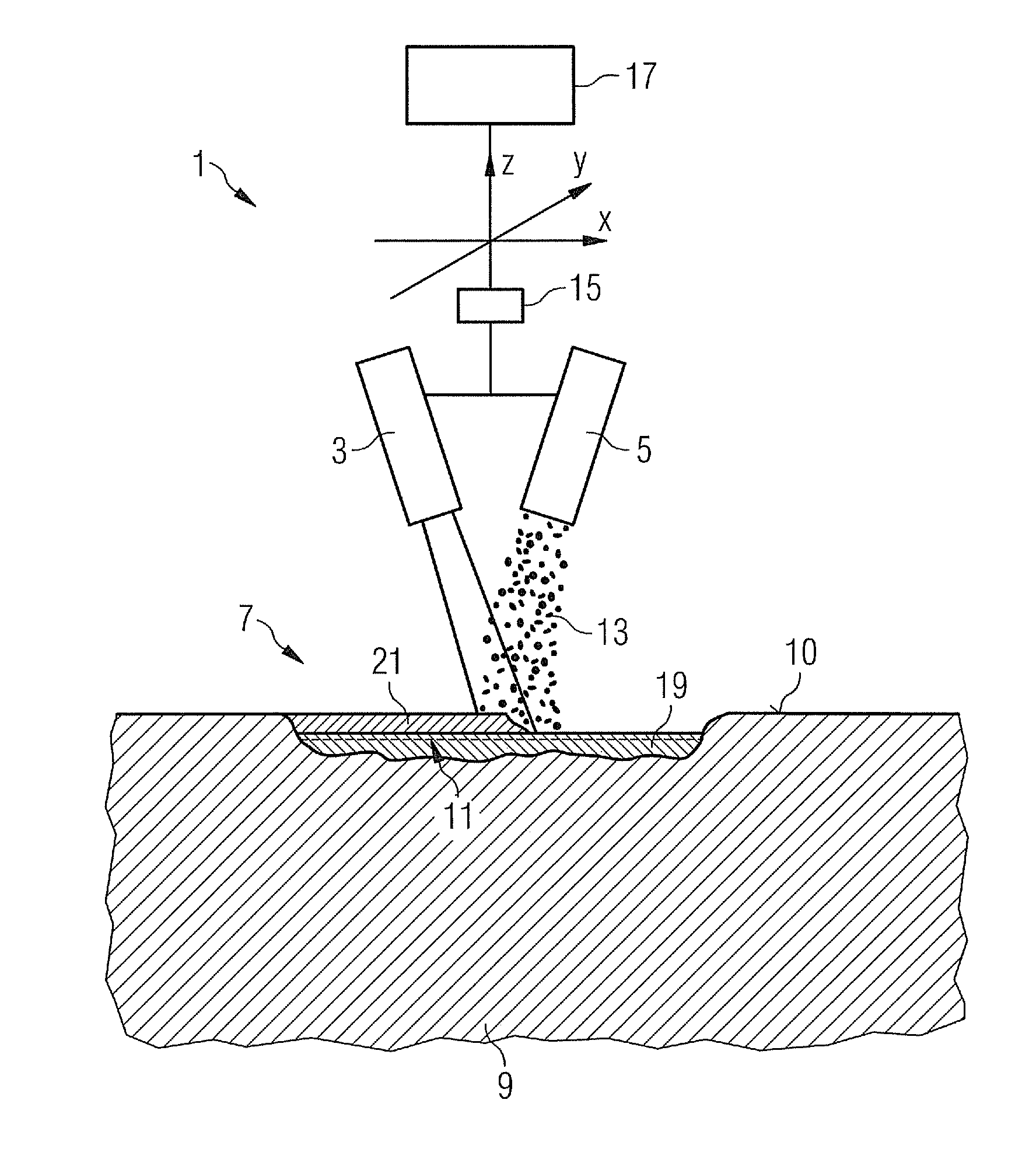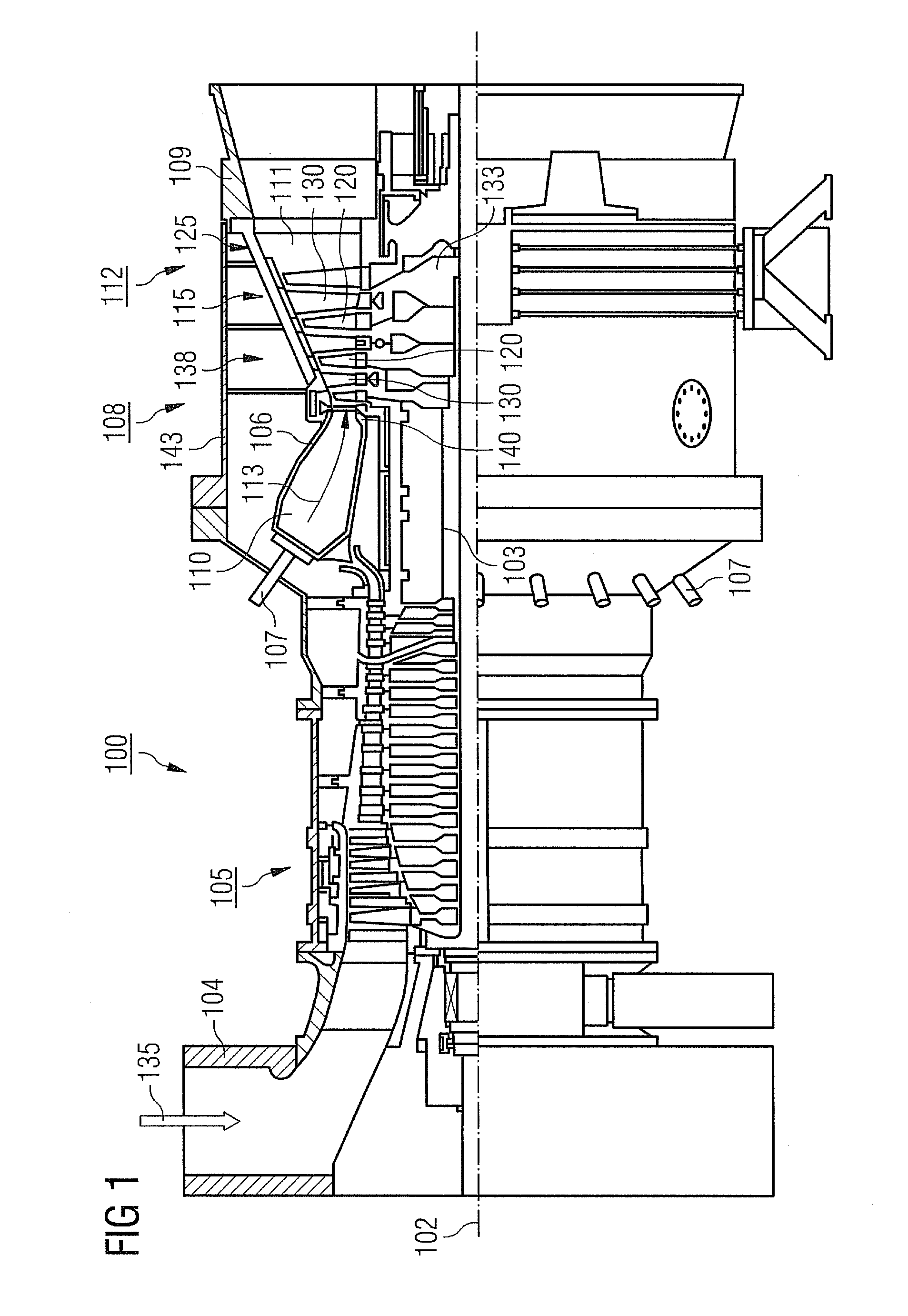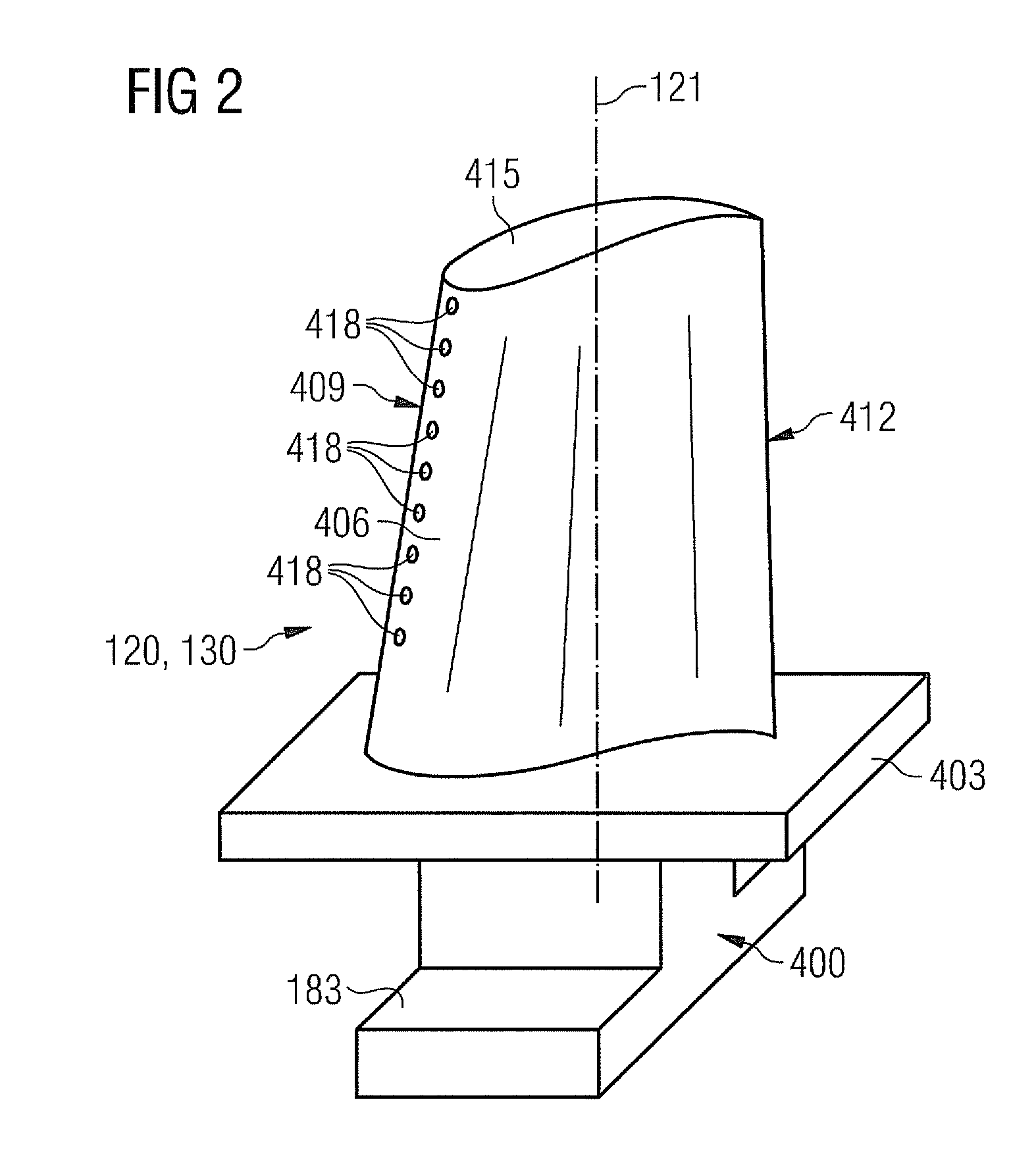Method and apparatus for welding workpieces of high-temperature superalloys
a technology of high-temperature superalloys and welding workpieces, which is applied in the direction of machines/engines, waterborne vessels, pumps, etc., can solve the problems of cracks and spread of ′-strengthened nickel-based superalloys over time, and the moving blades of gas turbines are exposed to high temperatures and strong mechanical loads
- Summary
- Abstract
- Description
- Claims
- Application Information
AI Technical Summary
Benefits of technology
Problems solved by technology
Method used
Image
Examples
Embodiment Construction
[0031]FIG. 1 shows by way of example a gas turbine 100 in a longitudinal partial section.
[0032]The gas turbine 100 has in the interior a rotor 103 with a shaft 101, which is rotatably mounted about an axis of rotation 102 and is also referred to as a turbine runner.
[0033]Following one another along the rotor 103 are an intake housing 104, a compressor 105, a combustion chamber 110, for example of a toroidal form, in particular an annular combustion chamber with a number of coaxially arranged burners 107, a turbine 108 and the exhaust housing 109.
[0034]The annular combustion chamber 110 communicates with a hot gas duct 111, for example of an annular form. There, the turbine 108 is formed for example by four successive turbine stages 112.
[0035]Each turbine stage 112 is formed for example by two blade rings. As seen in the direction of flow of a working medium 113, a row of stationary blades 115 is followed in the hot gas duct 111 by a row 125 formed by moving blades 120.
[0036]The stat...
PUM
| Property | Measurement | Unit |
|---|---|---|
| speed | aaaaa | aaaaa |
| diameter | aaaaa | aaaaa |
| temperatures | aaaaa | aaaaa |
Abstract
Description
Claims
Application Information
 Login to View More
Login to View More - R&D
- Intellectual Property
- Life Sciences
- Materials
- Tech Scout
- Unparalleled Data Quality
- Higher Quality Content
- 60% Fewer Hallucinations
Browse by: Latest US Patents, China's latest patents, Technical Efficacy Thesaurus, Application Domain, Technology Topic, Popular Technical Reports.
© 2025 PatSnap. All rights reserved.Legal|Privacy policy|Modern Slavery Act Transparency Statement|Sitemap|About US| Contact US: help@patsnap.com



